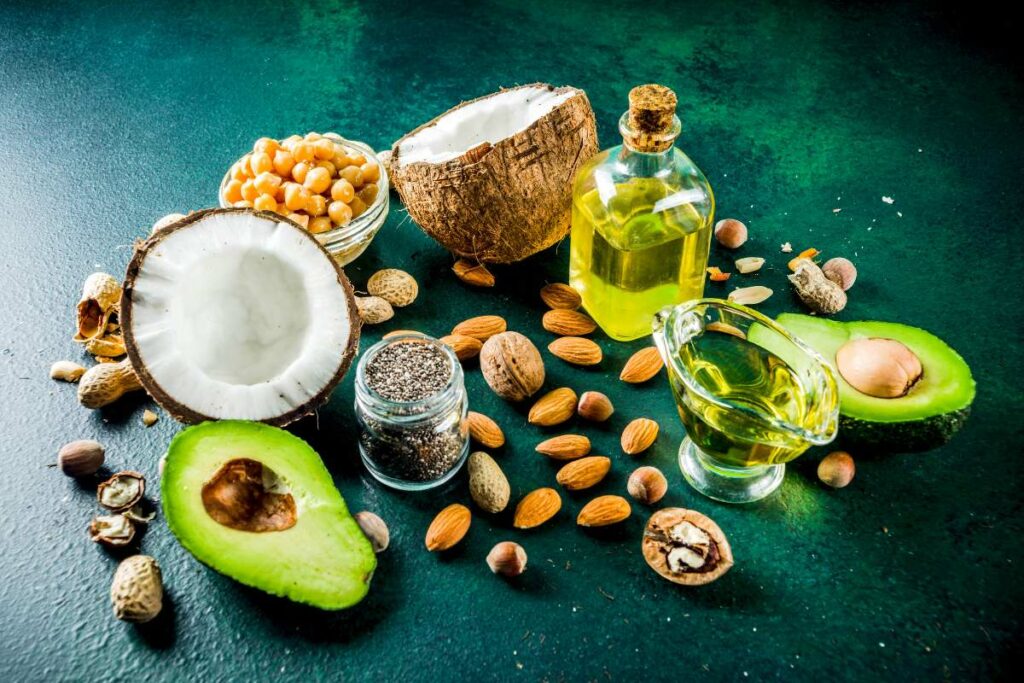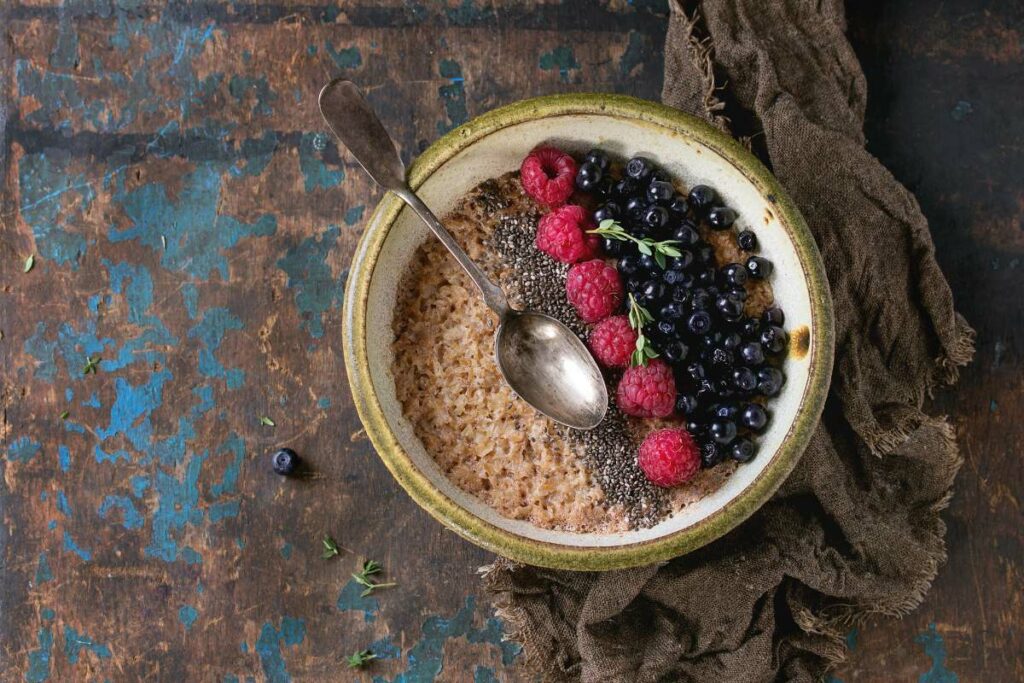The Power of Superfoods: What They Are and How to Incorporate Them into Your Diet
Today, let’s dive right into the world of superfoods. Think of them as nature’s own multivitamins; they’re loaded with vitamins, minerals, and antioxidants that can give your health a real boost.
While you might think ‘superfood’ is just a trendy term, these nutritional powerhouses have actually been rockstars for centuries.
Quinoa, for example, wasn’t just a side dish; it was a main event for the Incas. And the Aztecs and Mayans? They were all over chia seeds, using them for everything from food to medicinal purposes.
Superfoods have a rich history, and adding them to your diet is like tapping into age-old secrets for good health.

This post may contain affiliate links, which helps keep this content free. Please read our disclosure for more info.
The Nutritional Bounty of Superfoods
When we say superfoods are nutritional powerhouses, we really mean it. They’re like the all-stars of the food world. Here’s a bit more about what makes them so super:
Packed with Vitamins and Minerals: Superfoods often have an abundance of essential vitamins and minerals. For example, leafy greens like spinach and kale are rich in vitamins A, C, and K, as well as iron and calcium. These nutrients are essential for everything from keeping your bones strong to supporting your immune system.
Antioxidant Overload: Antioxidants are like your body’s personal cleaning crew. They help to clear out harmful substances known as free radicals, which can cause damage to your cells. Berries, such as blueberries and goji berries, are known for being particularly rich in antioxidants.
Healthy Fats: Not all fats are created equal, and some superfoods contain the good kinds! Avocados, nuts, and seeds, for instance, contain healthy fats which are essential for brain function and reducing inflammation in the body.

Fiber for Digestive Health: Many superfoods are high in fiber, which is great for your digestive system. Fiber helps keep things moving along, if you catch my drift. Plus, it’s also fantastic for heart health. Foods like chia seeds, lentils, and quinoa are fiber champions.
Plant-Based Proteins: Who said only meat has protein? There’s a host of superfoods like lentils, beans, and nuts that are packed with plant-based protein. These are especially great for vegetarians and vegans.
Natural Mood Boosters: Some superfoods have compounds that can even help to lift your spirits. For example, cacao, found in dark chocolate, contains substances that can improve your mood. In moderation, of course – don’t go gobbling up chocolate bars!
Microbial Magic: Let’s not forget about our gut friends – the microbiome. Foods like yogurt and fermented vegetables are superfoods for your gut, as they contain probiotics that support a healthy digestive system.
Incorporating these nutritional titans into your diet can contribute to your overall well-being. They can bolster your immune system, rev up your digestion, keep your heart happy, and even put a spring in your step.
Meet the Superfood Family

Welcome to the Superfood Family Reunion! Let’s get acquainted with some familiar faces and meet a few exciting newcomers.
The superfood family is as varied as it is nutritious, with members hailing from different corners of the world.
Fruits
Blueberries: These little blue jewels are bursting with antioxidants, vitamin C, and fiber. They’re fantastic in smoothies, on top of your cereal, or just as a snack.
Acai Berries: These Brazilian beauties are not just for show. They’re packed with antioxidants and can be enjoyed in açaí bowls, smoothies, or juices.
Goji Berries: Originating from China, goji berries are rich in vitamin A and can be eaten dried, or used in teas and smoothies.
Veggies
Kale: Kale has practically become synonymous with the term superfood. This leafy green is a vitamin powerhouse, loaded with vitamins A, K, and C.
Spinach: Another leafy champion, spinach is versatile and mild-tasting, with an impressive resume that includes iron, calcium, and magnesium.
Seeds and Grains
Chia Seeds: These tiny seeds are big on nutrients, including omega-3 fatty acids, fiber, and protein. They’re great in puddings, smoothies, or as a topping.
Flaxseeds: Rich in fiber and omega-3s, flaxseeds can be added to smoothies, baked goods, or sprinkled on yogurt.
Quinoa: It’s a grain, it’s a seed, it’s…quinoa! This gluten-free wonder is high in protein and is a fabulous substitute for rice or pasta.
Nuts
Almonds: Perfect as a snack, almonds are high in heart-healthy fats, protein, and vitamin E.
Walnuts: Brain-shaped and brain-friendly, walnuts have a high content of omega-3 fatty acids.
Spices and Herbs

Turmeric: With its active ingredient curcumin, turmeric is known for its anti-inflammatory properties. It’s a staple in Indian cuisine and can be used in curries, soups, or teas.
Cinnamon: This aromatic spice isn’t just for flavor; it’s loaded with antioxidants and has been linked to reduced blood sugar levels.
Aquatic All-Stars
Seaweed: Often associated with Japanese cuisine, seaweed is a source of iodine, which is crucial for thyroid function. It’s also rich in various vitamins and minerals.
Spirulina: This blue-green algae might not sound appetizing, but it’s a protein powerhouse and can easily be added to smoothies.
Related Article: 7 Superfood Benefits of Spirulina + 5 Tasty Recipes
Beans and Legumes
Lentils: A staple in many cuisines, lentils are packed with protein, fiber, and various essential nutrients.
Chickpeas: Also known as garbanzo beans, chickpeas are versatile and can be used in dishes like hummus or salads.
Don’t be afraid to experiment with these nutritional all-stars in your kitchen, and discover your new favorites!
The Science Behind Superfoods
Let’s channel our inner detectives and dig into the scientific evidence behind superfoods. Are they really the heroes they’re made out to be? Or is it all just clever marketing?
Here’s what science has to say:
Spotlight on Specific Nutrients
The term ‘superfood’ might be broad, but science often narrows its focus to specific compounds.
For example, researchers have looked at how the anthocyanins in blueberries can affect heart health, or how the curcumin in turmeric might play a role in combating certain cancers.
Essentially, it’s not just about the food as a whole, but the interactions of its specific nutrients within our bodies.
Clinical Trials

Some superfoods undergo clinical trials to examine their effects on human health.
For instance, a study published in PubMed, found that consuming chia seeds did not significantly alter disease risk factors but did increase blood levels of alpha-linolenic acid, which is beneficial for heart health.
Clinical trials help us understand which aspects of superfoods are truly beneficial.
Bioavailability
Not all the good stuff in superfoods is easily absorbed by our bodies.
Take turmeric, for example. Its star compound, curcumin, has low bioavailability, which means our bodies can’t absorb much of it on its own.
However, pairing it with black pepper, which contains piperine, enhances curcumin absorption by 2000%. Science helps us learn how to get the most out of these foods.
Genetics and Personalized Nutrition
The future of nutrition is personalized, and what works as a superfood for one person might not for another.
Our genetic makeup can influence how we absorb and metabolize nutrients. For example, some people might benefit more from the omega-3 fatty acids in walnuts due to their specific genetic variants affecting fat metabolism.
The Synergy Effect

Superfoods don’t work in isolation. Scientists have found that sometimes the synergistic effects of consuming a variety of nutrient-rich foods can be more potent than consuming one superfood alone.
For example, the combination of the antioxidants found in tomatoes and broccoli has been shown to be more effective in slowing down prostate tumor growth than consuming either vegetable alone.
Prevention vs. Treatment
There’s a distinction between using superfoods as a preventative measure versus a treatment for existing conditions.
While certain superfoods may help reduce the risk of chronic diseases when included as part of a balanced diet, they are not a substitute for medical treatment for diseases.
Consumer Beware of Exaggerated Claims
The labeling of certain products as superfoods has sometimes more to do with marketing than science.
It’s crucial to discern between evidence-based benefits and claims that are not substantiated. Be critical and seek out peer-reviewed studies or consult health professionals.
Science tells us that superfoods can be part of a healthy diet, but it’s not just about piling them on your plate.
It’s about knowing which ones offer benefits you’re looking for, how to combine them effectively, and remembering that they’re just one piece of the larger nutritional puzzle.
How to Welcome Superfoods into Your Diet

Now, let’s get practical. Incorporating superfoods into your daily meals can be simple and delicious.
Breakfast Boost: Let’s start with the most important meal of the day. How about jazzing up your oatmeal or cereal with a handful of berries or a sprinkle of chia seeds? For an extra kick, you can add a dash of cinnamon for flavor and health benefits.
Super Smoothies: This one is a classic. Smoothies are like the superhero team-up of the food world. Toss in spinach, kale, or even avocado along with your favorite fruits. Don’t forget to add a spoonful of flaxseeds or a pinch of spirulina for a nutritional boost.
Related Article: A Guide to Perfect Smoothie Bowls

Snack Attack: Ditch the chips and opt for a handful of nuts or seeds as a snack. They’re not just satisfying; they’re also packed with nutrients. If you’re in the mood for something more elaborate, try making a homemade trail mix with almonds, walnuts, dried goji berries, and dark chocolate bits.
Veggie-Packed Lunches and Dinners: When it comes to main meals, think color! The more vibrant your plate, the better. Add some quinoa as a base, top it with roasted veggies like sweet potatoes and broccoli, and don’t forget some leafy greens. Drizzle it with a dressing made from olive oil, lemon, and a pinch of turmeric.
Related Article: 12 Healthy Lunches for Work Under 500 Calories
Herb and Spice it Up: Remember, superfoods also come in small packages, like herbs and spices. Season your dishes with the likes of turmeric, ginger, and garlic. Not only will this elevate the flavor, but you’ll also reap some health benefits.
Mindful Portions: Before you go all in, remember that even superfoods should be consumed in moderation. They can be quite nutrient-dense, and overdoing it isn’t the way to go. Balance is key.
Welcoming superfoods into your diet can be effortless and scrumptious. It’s about making small adjustments and experimenting until you find the combos that make both your taste buds and your body happy.
Sustainability and Responsible Choices

Before we wrap up, there’s something super important we need to chat about – sustainability.
Yeah, superfoods are awesome, but the buzz around them can sometimes mess with Mother Nature and the cool folks who grow them. When everyone’s clamoring for that quinoa or acai berry, it can put the squeeze on the environment and the local communities that produce them.
Think about it – if a superfood is grown halfway across the globe and everybody wants a piece of it, that’s a lot of traveling for those little guys. Not to mention, local folks might not get their share, or the soil might throw up its hands from being overworked.
So, let’s be smart. When you’re picking out superfoods, peek at the labels. Look for brands that play nice with the environment and treat farmers fairly – such as Fair Trade or organic.
And hey, why not give some love to local produce? There are probably superfoods grown not too far from your backyard.
Being healthy is amazing, but let’s make sure our planet stays healthy too. A little mindfulness in our choices goes a long way. High-fives to being superfood savvy!

Wrapping Up: Making the Most of Superfoods
Superfoods are packed with vitamins, minerals, and antioxidants, and adding them to your diet can be really good for your health. But here’s the catch – they’re not magic.
They work best when they’re part of a balanced diet that includes a mix of different foods. And hey, let’s think about the bigger picture too.
Where and how these superfoods are grown matters. It’s a good idea to choose products that are grown in ways that are good for the environment and the people who grow them. So, check labels, maybe opt for organic or Fair Trade options when you can.
All in all, superfoods are a great addition to your meals, but remember – balance is key and thinking about the planet is cool, too. Bon appétit!
